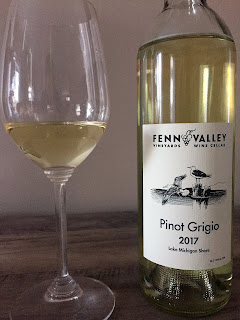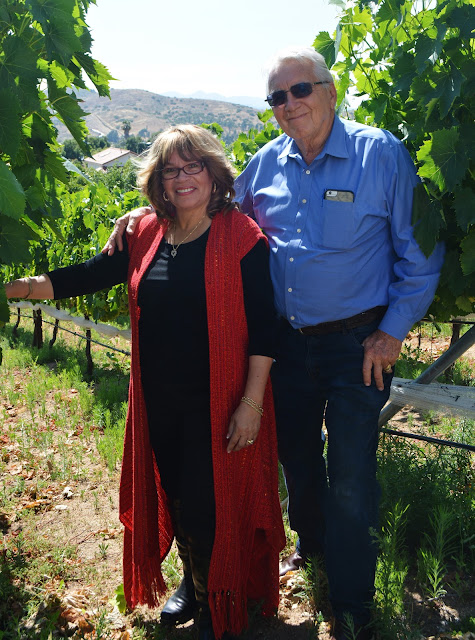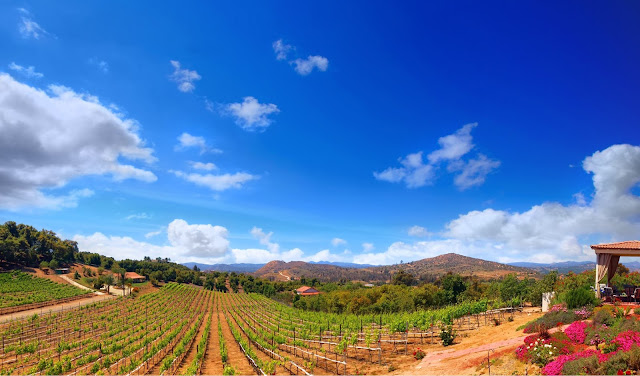Shocking to some, but all 50 states in the U.S.
produce wine. I know I’ve barely touched many of them myself and that
is why I was excited to have the opportunity to try a variety of wines
from Michigan state last month with the Winestudio
program I’m part of. I’m most familiar with the wines of upstate NY
around the Finger Lakes wine region and I could only assume that the
climate is similar based on the latitude so they were probably growing
some similar grape varietals. I was rather impressed by the wines I
tried and it’s a shame wine regions like Michigan aren’t getting enough publicity and attention that they should be. Especially when there are 140 wineries to explore in this region. Hopefully this will open your eyes and palettes to what is available to us as wine consumers.
The
first recorded incident of winemaking goes as far back as 1679 when
French explorers found grapevines on Michigan soil. Commercial
winemaking didn’t start though until later in the 1800s. Within the
last decade the acreage dedicated to vines has doubled. Michigan is also ranked 4th in wine production within the US and in the top 10 of national wine production. This goes to show you what a vibrant and growing wine community is bursting at the seams.
Michigan has 5 AVA’s (American Viticultural Area) in order of oldest to newest established appellations including: Fennville, Lake Michigan Shore, Leelanau Peninsula, Old Mission Peninsula andTip of the Mitt.
 |
| Copyright of Michigan Wine Collaborative |
Quite
fun and unique names. These Michigan wine regions benefit from the
“lake effect” of Lake Michigan and other surrounding bodies of waters as
it helps mitigate the temperatures of the cold winters and the hot days
of summer.
So what types of grapes are being grown in Michigan? They grow cold hardy grapes along with vinifera grapes, but riesling steals the show along with hybrids. The most planted grape varieties are riesling, pinot noir, chardonnay, pinot gris, cabernet franc and chambourcin as you'll see below, but there are many others as you’ll see I also tried a gruner veltliner, typical of Austria.
The Michigan Wine Collaborative established a few years ago
supports the growing wine industry in Michigan and brings awareness and
support to the wineries and farmers that work tirelessly for the
production of these fantastic wines. It’s no small feat and is
important to the economy of Michigan as the wine industry itself
generates $5.4 billion annually.
St. Julian Winery
Two of the wines I’m sharing from St. Julian is the oldest winery of the region established in 1921 by Mariano Meconi and is today operated by 4th generation family members.
He originally founded Meconi Wine Company in Ontario. After
Prohibition he moved down to Detroit and renamed his company the Italian
Wine Company. Finally
in 1936 he settled in to where the winery exists today and is today
called the St. Julian Wine Company in the Lake Michigan Shore
Appellation.
2017 Mountain Road Winery Riesling
This
wine had beautiful aromatics of stone fruit and some petrol on the
nose. A crisp and clean wine with balanced acidity and fruit full of
peach, tropical fruits, citrus and a hint of tangerine. Finishing with a
nice saltiness on the tongue. SRP $19.99 ABV 12% This wine went fantastic with some homemade pad thai.
2017 Braganini Reserve Gruner
The last 15 years St. Julian has been focusing on some single variety wines under the Braganini Reserve label. These
grapes came from the Oxley Family Farms in Lawton, MI whose grapes were
originally planted in 1868. Ed and Phyllis Oxley bought the farm in
1967 and today the 2nd generation of their sons joined them in the family business in the 1990’s. The gruner veltliner
grapes come from the highest point in Van Buren County where the grapes
are picked 2 times early morning when the grapes are still cool. The
first picking results in more grassy characteristics where the 2nd
picking lends to more tropical notes. A bright acidity with good
citrus, apples and nice salinity, seeming to be a common trait of this
wine region that I really enjoyed. ABV SRP $19.99
Fenn Valley
 Fenn Valley
was established in 1973 south of Holland, MI and is only about 5 miles
from Lake Michigan on a sandy ridge built into the hill to take
advantage of the natural stable temperatures of the earth. The Welsch family operates the winery that came over from Michigan operating in their 3rd generation. The
first grapes were planted in 1974 and the winery is always
experimenting with what grows best. the originally were growing
hybrids like chancellor, syval, vignoles, vidal and foch. A couple years later they planted vinifera grapes like riesling, chardonnay and gewurztraminer. Following years they planted pinot gris, pinot noir and cab franc occupying 90 acres of vineyards today.
Fenn Valley
was established in 1973 south of Holland, MI and is only about 5 miles
from Lake Michigan on a sandy ridge built into the hill to take
advantage of the natural stable temperatures of the earth. The Welsch family operates the winery that came over from Michigan operating in their 3rd generation. The
first grapes were planted in 1974 and the winery is always
experimenting with what grows best. the originally were growing
hybrids like chancellor, syval, vignoles, vidal and foch. A couple years later they planted vinifera grapes like riesling, chardonnay and gewurztraminer. Following years they planted pinot gris, pinot noir and cab franc occupying 90 acres of vineyards today.
2017 Fenn Valley Pinot Grigio
A pale straw color.
Aromatic with plenty of citrus. A delicate, light, crisp wine filled
with lemon citrus and pear. A nicely balanced wine with salinity on the
finish. ABV 12% AVV $14
Amoritas Vineyards
 Located on the Leelanau Peninsula Amoritas Vineyards
is operated by the Goodell family. The winery was named after the
original homestead and Amore family that occupied the residence as well
as Amore Road where the winery is based. Occupying 13 acres of vines
all grapes are estate grown. The family’s vision is to produce clean,
delicate and delicious wines.
Located on the Leelanau Peninsula Amoritas Vineyards
is operated by the Goodell family. The winery was named after the
original homestead and Amore family that occupied the residence as well
as Amore Road where the winery is based. Occupying 13 acres of vines
all grapes are estate grown. The family’s vision is to produce clean,
delicate and delicious wines.
2016 Amoritas Vineyards Chardonnay
Almost
clear in a color with a tinge of straw yellow the wine gives way to a
lemon citrus nose with grassiness and pineapple notes. A light, crisp
wine filled with juicy ripe apples and tropical fruits. ABV 11.5% SRP
$21 I tried this pairing out with some quesadillas for an easy weeknight meal that went together just great.
Chateau Chantal
 Located on the Old Mission Peninsula Chateau Chantal
is winery you can actually stay as they operate a B&B onsite and
based on their pictures of the winery online the views are gorgeous.
The Begin family has quite an interesting history with their previous
careers as a Catholic priest and Felician nun. They married in 1974
and followed Robert’s dream of opening their French European chateau
style property that was completed in 1993.
Located on the Old Mission Peninsula Chateau Chantal
is winery you can actually stay as they operate a B&B onsite and
based on their pictures of the winery online the views are gorgeous.
The Begin family has quite an interesting history with their previous
careers as a Catholic priest and Felician nun. They married in 1974
and followed Robert’s dream of opening their French European chateau
style property that was completed in 1993.
2016 Chateau Chantal Vineyard Reserve Chardonnay
Sourced
from 30+ year old vines this is a barrel fermented wine aged 9 months
in French and American oak adding a creaminess to the wine with vanilla
notes alongside melon, citrus and green apples. ABV 14% SRP $30
Don't miss an Italian wine blog ~ Subscribe
*These wines were provided as samples, but opinions are always my own.









